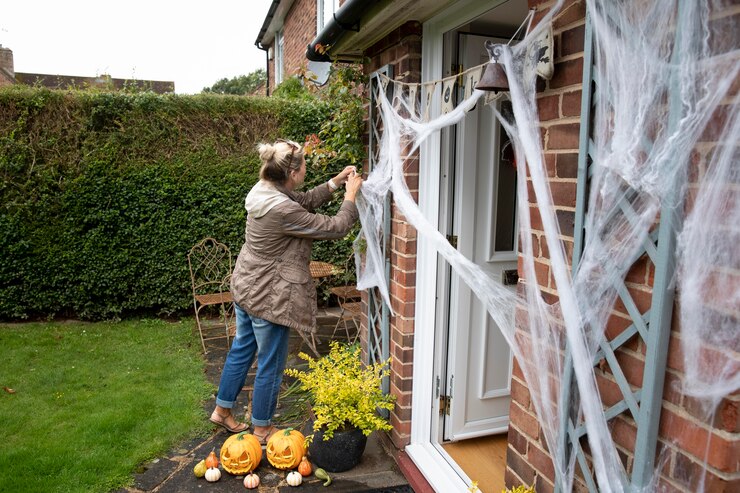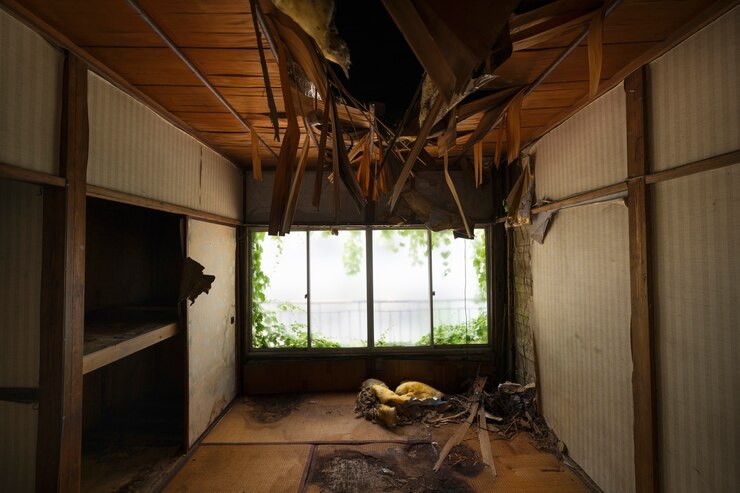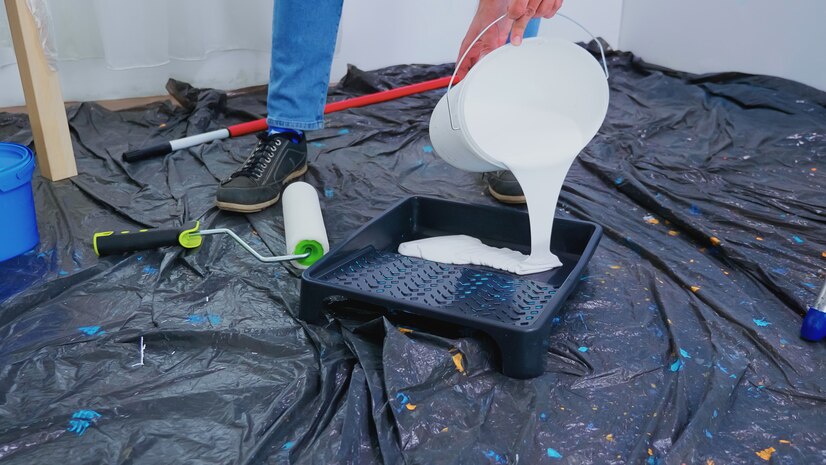No, bat removal is not typically covered by home insurance. Bats are considered pests, not a part of normal home maintenance.

Understanding The Coverage For Bat Removal
Home insurance may or may not cover bat removal. Before assuming coverage, it’s crucial to check your policy details for clarification.
Bats are fascinating creatures, but having them take up residence in your home can be a terrifying experience. Not only do they pose potential health risks, but they can also cause extensive damage to your property. Many homeowners wonder if their home insurance policy covers the cost of bat removal, and rightly so.
Understanding the coverage for bat removal is essential to ensure you are adequately protected in such situations.
Importance Of Understanding Home Insurance Coverage
It’s crucial to have a clear understanding of what your home insurance policy covers when it comes to bat removal. Here’s why:
- Financial protection: Knowing your coverage can save you from unexpected out-of-pocket expenses if you’re faced with a bat infestation. Being aware of the specific coverage details can help you plan and budget accordingly.
- Peace of mind: Dealing with bats in your home is already stressful enough. By understanding your insurance coverage, you can have peace of mind knowing that your policy may provide assistance in the event of bat removal.
- Timely action: If you know that bat removal is covered by your insurance, you can promptly take the necessary steps to address the issue without any hesitation. This ensures that the bats are removed quickly, minimizing potential damage and health risks.
Factors Influencing Coverage For Bat Removal
Before assuming that bat removal is covered by your home insurance, there are several factors to consider:
- Policy specifics: The coverage for bat removal may vary depending on your insurer and the specific policy you have. Review your insurance policy carefully to understand the extent of coverage for bat-related incidents.
- Cause of infestation: Home insurance policies usually cover bat removal if the infestation is due to a covered peril, such as a storm, fire, or water damage. However, if the bats entered your home through a structural maintenance issue, coverage may be limited or excluded.
- Additional endorsements: Some insurers offer add-on endorsements or riders that provide coverage specifically for bat removal. Check if you have any additional endorsements that might enhance your coverage for this type of incident.
Common Misconceptions About Coverage
There are some common misconceptions about coverage for bat removal that homeowners should be aware of:
- Home insurance is a one-size-fits-all solution: Home insurance policies can vary significantly in terms of coverage, depending on the insurance carrier and the policy itself. It’s crucial to read through your policy documents and discuss any coverage questions with your insurance provider.
- Bat-related damage is always covered: While bat removal may be covered in some cases, the resulting damage caused by the bats may not be fully covered under your home insurance policy. It’s essential to understand what types of damage are included and any limits or exclusions that may apply.
- Neglecting maintenance won’t affect coverage: Many insurance policies require homeowners to maintain their properties adequately. If the bat infestation is a result of neglecting necessary property repairs or maintenance, coverage for bat removal may be denied.
Remember, each insurance policy is unique, and the coverage for bat removal will vary. To ensure you have the protection you need, it’s always best to consult with your insurance provider and thoroughly understand the specifics of your policy.
Determining Coverage For Bat Infestation
Determining coverage for bat infestations can be a crucial concern for homeowners. Many wonder if home insurance will cover the costs of bat removal. Understanding the details of your policy is essential to determine if such circumstances are included in your coverage.
Reviewing Your Home Insurance Policy:
- Start by reviewing the terms and conditions of your home insurance policy to determine if bat removal is covered.
- Look for specific clauses or provisions that mention wildlife infestation or pest control coverage.
- Pay attention to any exclusions or limitations that may apply, such as if the infestation is deemed a pre-existing condition or if certain types of bat infestations are not covered.
- If you are unsure about any details, reach out to your insurance provider directly and ask for clarification.
Identifying The Presence Of Bats In Your Home:
- Look for signs of bats such as droppings, urine stains, or musky odors.
- Bats are nocturnal, so you may also hear scratching or fluttering sounds during the night.
- Check for physical damages like torn screens, gaps in walls, or entry points near the roof.
- If you spot bats or suspect their presence, contact a professional wildlife removal service to assist you in confirming the infestation.
Inspecting The Extent Of Bat Infestation:
- Conduct a thorough inspection of your property, focusing on areas where bats are commonly found, such as attics, crawl spaces, or unused chimneys.
- Take note of the number of bats and their nesting or roosting areas.
- Assess any damages caused by the infestation, such as urine stains, guano accumulation, or structural harm.
- Understanding the severity of the infestation will help you determine the level of removal and cleanup required.
Remember to refer to your home insurance policy to understand the coverage it provides for bat removal and associated damages. Identifying and inspecting the presence of bats in your home is crucial when filing a claim with your insurance company.
Coverage Options For Bat Removal
Home insurance coverage for bat removal varies, so it’s important to check your policy. Some home insurance policies may cover bat removal if the infestation poses a threat to your property or health. Contact your insurance provider for details.
Bats can be a nuisance when they take up residence in your home. Not only can they cause structural damage, but they also present health risks due to the potential transmission of diseases. If you’re facing a bat infestation, you may be wondering if your home insurance covers the costs associated with professional bat removal services.
In this section, we’ll explore the different coverage options for bat removal and help shed light on this important matter.
Different Types Of Home Insurance Coverage:
- Standard home insurance policies typically provide coverage for certain perils, such as fire, theft, and vandalism. However, the coverage options for bat removal may vary depending on the specific policy and insurance provider. It’s important to carefully review your policy documents or consult with your insurance agent to understand the extent of your coverage.
Exploring Specific Coverage Options:
- While bat removal may not be explicitly listed as a covered peril in most home insurance policies, some coverage options may still apply. Here are some potential scenarios where coverage may be available:
- If the bats cause damage to your property, such as chewing through electrical wires or damaging insulation, your home insurance policy may cover the repairs. However, it’s important to note that coverage may be subject to deductibles and the limit of your policy.
- If you or a family member suffer physical harm or illness due to contact with bats in your home, your home insurance policy’s liability coverage may come into play. This coverage typically extends to bodily injury claims from third parties. Again, it’s crucial to review the specific terms and conditions of your policy to determine the scope of coverage.
Comprehensive Coverage:
- To have more comprehensive protection against bat-related issues, you may consider purchasing additional coverage options or upgrading your policy. These may include:
- Wildlife damage coverage: Some insurance providers offer optional riders or endorsements that cover damage caused by wildlife, including bats. This additional coverage can provide financial protection if your home sustains bat-related damage.
- Animal removal coverage: Certain home insurance policies have add-on coverage options for animal removal services. This can help cover the costs of professional bat removal from your property.
Exclusions And Limitations:
- It’s essential to understand that home insurance policies often have exclusions and limitations. Here are some common exclusions that may apply to bat removal:
- Neglect or maintenance-related issues: If the bat infestation is a result of neglecting home maintenance or failing to take necessary precautions, your home insurance policy may not cover the costs of bat removal or associated damages.
- Gradual damage: Home insurance typically covers sudden and accidental damage rather than damage that occurs over time. If the bat infestation and resulting damage are deemed gradual, your insurance company may deny coverage.
Additional Endorsements Or Riders For Bat Removal:
- To ensure adequate coverage for bat removal, you should consult with your insurance provider to explore any available endorsements or riders specific to your needs. These additional options can provide added protection and peace of mind.
Remember, the specifics of your home insurance policy will ultimately determine coverage for bat removal. Reviewing and understanding your policy terms, exclusions, and any available endorsements is crucial when dealing with a bat infestation. Reach out to your insurance provider for detailed information regarding the coverage options available to you.
Filing A Claim For Bat Removal
Filing a claim for bat removal may not be covered by home insurance policies, so it’s essential to check your specific policy. Ensure you understand the terms and conditions regarding wildlife removal to avoid any surprises during the claims process.
If you discover bats in your home and are wondering if your home insurance will cover the costs of their removal, it’s important to understand the process of filing a claim. Here are the steps to follow when filing a claim for bat removal:
Steps To Follow When Filing A Claim
- Contact your insurance company: Notify your insurance company about the bat infestation and inquire about coverage for their removal. Provide them with all the necessary details and documents.
- Document the bat infestation and removal process: Keep thorough records of the bat infestation, including any damage they may have caused. Take pictures and videos of the bats and any evidence such as droppings or damage to your property.
- Engage professional help: Hire a professional bat removal expert who can handle the situation safely and effectively. Keep a record of their services, including invoices and receipts.
- Review your insurance policy: Go through your insurance policy to understand the coverage and limitations regarding pest infestations and removal. Familiarize yourself with any specific requirements or exclusions related to bats.
- File a claim: Fill out the necessary claim forms provided by your insurance company. Be sure to provide accurate and detailed information about the bat infestation and removal process. Attach any supporting documents, such as photographs and invoices.
- Cooperate with the insurance company: Respond promptly to any questions or requests for additional information from your insurance company. Provide any requested documents or evidence to support your claim.
- Follow up on the claim: Stay in touch with your insurance company to track the progress of your claim. Ask for updates and clarify any uncertainties along the way.
- Negotiate if necessary: If your claim is denied or you’re not satisfied with the settlement offered, don’t hesitate to negotiate with your insurance company. Provide any additional evidence or supporting documentation that may strengthen your case.
- Seek legal advice if needed: If you encounter difficulties with the claims process or believe your insurance company is acting unfairly, consider consulting with an attorney specializing in insurance claims to understand your rights and options.
Working with the insurance company during the claims process can be a complex task. By following these steps and documenting the bat infestation and removal process, you increase your chances of a successful claim for bat removal expenses. Remember to consult your insurance policy for specific details about coverage and exclusions related to pest infestations.
Alternative Options For Bat Removal
Home insurance does not typically cover bat removal, but there are alternative options available. Consider hiring a professional wildlife control service or contacting your local health department for assistance.
Bats can become a nuisance when they decide to take up residence in your home. While some homeowners may assume that their home insurance will cover bat removal, this is often not the case. Nevertheless, there are alternative options available for dealing with a bat infestation.
From seeking professional assistance to diy techniques, let’s explore the different possibilities:
Seeking Professional Assistance:
- Hiring a professional bat removal company can provide peace of mind, as they are trained and experienced in safely handling bat removal.
- Professionals have the necessary knowledge and equipment to accurately identify bat entry points and seal them off, preventing further access.
- They also possess the expertise to remove bats safely and efficiently, minimizing risks to both you and the bats.
Diy Bat Removal Techniques:
- For those who prefer a hands-on approach, there are some do-it-yourself techniques that can help eliminate bats from your property.
- Installing bat houses in nearby trees or structures can provide an alternative roosting option, encouraging bats to relocate naturally.
- Additionally, sealing off any potential entry points, such as gaps or cracks in your home’s exterior, can effectively deter bats from entering.
Costs And Considerations For Alternative Options:
- Hiring a professional bat removal service typically comes with associated costs, which can vary depending on the severity of the infestation and the extent of the necessary repairs.
- Diy techniques may be more cost-effective, but they require time, effort, and knowledge to be successful.
- It’s important to consider the local regulations and laws regarding bat removal, as some species may be protected and require specific permits or guidelines.
- In either case, it’s crucial to address the bat issue promptly to prevent further damage to your property and potential health risks.
Remember, when dealing with bat removal, it’s essential to prioritize safety and the well-being of both humans and bats. Whether you opt for professional assistance or choose the diy route, taking timely action will help ensure a resolution to your bat infestation.
Preventing Bat Infestation And Controlling Costs
Protect your home from costly bat infestations with preventive measures and find out if bat removal is covered by your home insurance. Keep your costs controlled and ensure a safe living environment.
Taking Preventive Measures Against Bat Infestation:
- Seal openings and cracks: Inspect your home for any openings or cracks where bats can enter. Fill them with caulk or hardware cloth to prevent their entry.
- Install bat houses: Provide bats with alternative roosting spaces by installing bat houses on your property. This will reduce the chance of them seeking shelter in your home.
- Trim trees and shrubs: Keep trees and shrubs near your home well-trimmed to discourage bats from roosting there.
- Secure vents and chimneys: Use mesh screens or covers to prevent bats from accessing vents and chimneys.
- Limit outdoor lighting: Bats are attracted to insects that gather around bright lights. Minimize outdoor lighting to reduce the presence of insects and, in turn, the attraction for bats.
Factors That Can Affect The Cost Of Bat Removal:
- Size of the infestation: Large bat colonies may require more extensive removal methods, which can increase the overall cost.
- Location of the colony: Difficult-to-reach areas can lead to additional expenses as professionals may need specialized equipment or extra time to access and remove bats.
- Type of bat species: Some bat species are more aggressive and difficult to handle, requiring specialized knowledge and techniques for removal, which can affect the cost.
- Level of damage: If bats have caused structural damage to your property, the cost of repairs will add to the overall expense of removal.
- Additional services: If exclusion measures, such as installing bat-proof screens or sealing entry points, are necessary, they can contribute to the total cost of bat removal.
Maintaining A Bat-Friendly Home:
- Educate yourself: Learn about bats and their importance in the ecosystem. This will help foster a positive attitude towards their conservation.
- Avoid pesticides: Pesticides can harm bats directly or indirectly by reducing their food sources. Opt for natural pest control methods to maintain a healthy bat habitat.
- Provide water sources: Bats need access to water for drinking and foraging. Ensure there are suitable water sources nearby, like ponds or small containers.
- Preserve natural habitats: Maintain diverse plant and insect populations in your yard to support the bat’s natural food chain.
- Report bat sightings: If you notice bats in your area, report them to local conservation agencies or bat conservation organizations. This information can contribute to their monitoring and protection efforts.
Remember, taking preventive measures, considering relevant factors, and maintaining a bat-friendly home can help minimize the likelihood of bat infestation and ensure the cost of bat removal remains manageable. Stay aware and proactive to protect both your home and the bats themselves.
Frequently Asked Questions On Is Bat Removal Covered By Home Insurance
Faq 1: Does Home Insurance Cover Bat Removal?
Yes, in most cases, home insurance policies provide coverage for bat removal if it is determined to be necessary due to damage or threat to the property. However, it’s important to check your specific policy as coverage may vary depending on the insurance provider and the circumstances of the infestation.
Faq 2: What Should I Do If I Have Bats In My Home?
If you have bats in your home, it is important to contact professionals who specialize in bat removal. They will assess the situation, identify entry points, and safely remove the bats. Additionally, they can offer guidance on sealing off potential entry points to prevent future infestations.
Faq 3: How Much Does Bat Removal Cost?
The cost of bat removal can vary depending on factors such as the extent of the infestation, the size of your property, and the methods used for removal. Generally, the cost can range from a few hundred to a couple thousand dollars.
It’s recommended to get quotes from multiple reputable bat removal services to compare prices and services offered.
Conclusion
It is essential for homeowners to understand the coverage provided by their home insurance policy when it comes to bat removal. While most standard policies exclude coverage for damage caused by pests and vermin, there may be limited coverage available under specific circumstances.
It is crucial to review your policy and consult with your insurance agent to gain a clear understanding of what is covered and what is not. Taking preventive measures such as sealing potential entry points, and maintaining a clean and well-maintained home can significantly reduce the risk of a bat infestation, but it does not guarantee coverage under your insurance policy.
Ultimately, educating yourself about the details of your home insurance policy and seeking professional help and advice from bat removal experts are the best steps to take in order to address and potentially resolve any bat-related issues within your home.




